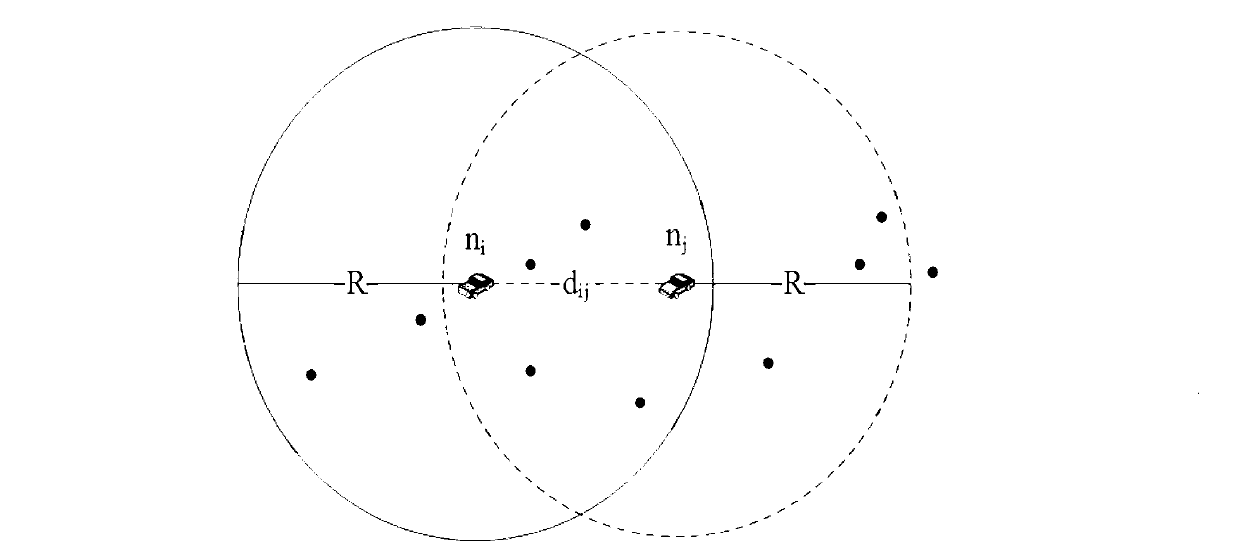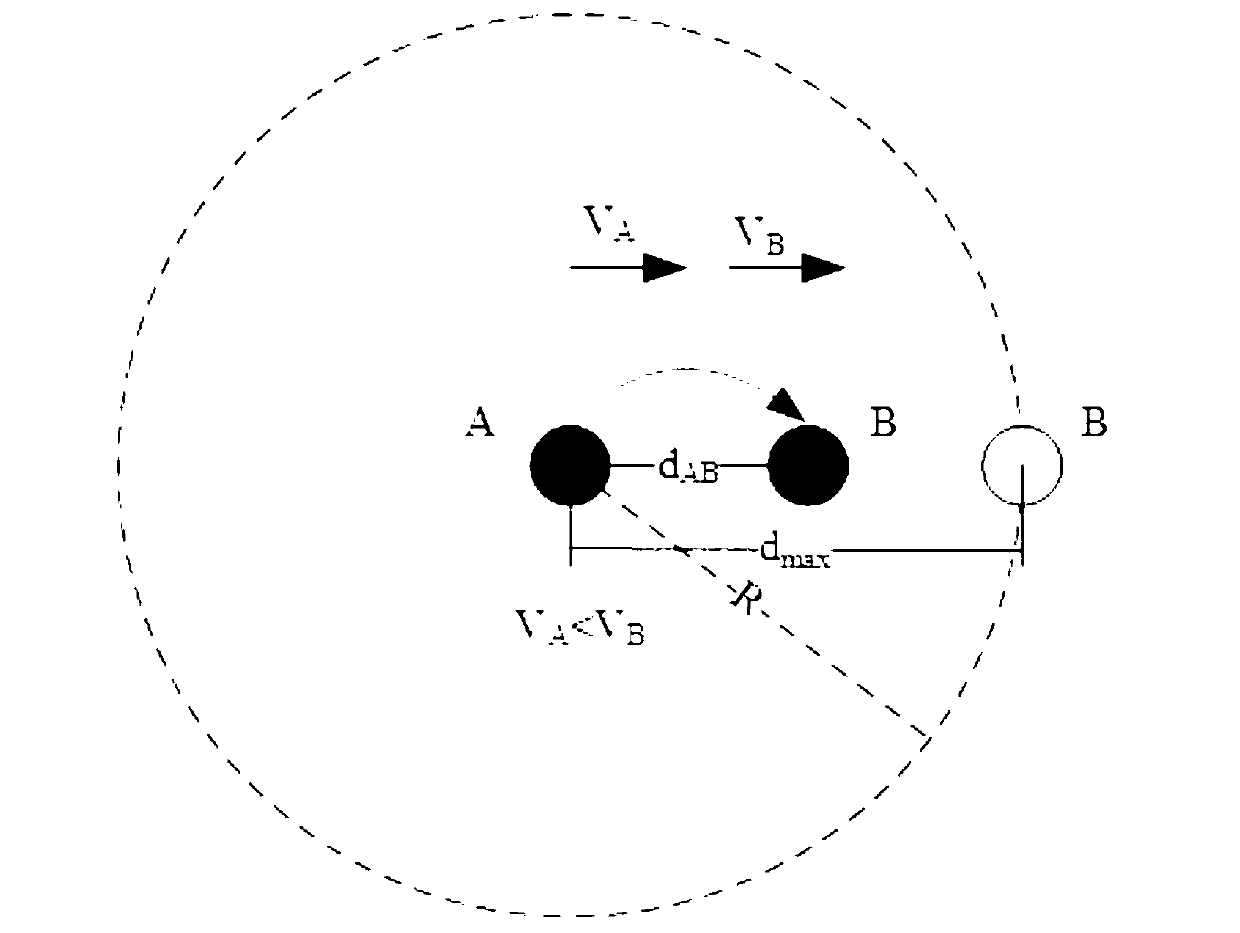Vehicular Ad hoc network routing method based on autonomously acquired road information
A vehicle-mounted self-organization and road information technology, applied in wireless communication, transmission systems, electrical components, etc., can solve the problems of reducing the stability of routing paths, road density errors, and not taking into account the randomness and inhomogeneity of vehicle distribution.
- Summary
- Abstract
- Description
- Claims
- Application Information
AI Technical Summary
Problems solved by technology
Method used
Image
Examples
Embodiment Construction
[0076] The technical solution of the present invention will be further described below in conjunction with the accompanying drawings.
[0077] we use Figure 7The simulation scene shown is simulated and verified, and the improved routing method of the present invention is compared with performance simulation in two aspects of packet delivery rate and packet end-to-end average transmission delay. Next, the simulation is carried out under different vehicle node numbers, different packet sending rates and vehicle running speeds. The randomness of node distribution and movement will affect the simulation results. The randomness of node distribution and movement will affect the simulation results. The simulation results have an impact, so the present invention reduces the impact of randomness on the simulation results by averaging the results of multiple simulations. Therefore, the present invention reduces the impact of randomness on the simulation results by averaging the results...
PUM
 Login to View More
Login to View More Abstract
Description
Claims
Application Information
 Login to View More
Login to View More - R&D
- Intellectual Property
- Life Sciences
- Materials
- Tech Scout
- Unparalleled Data Quality
- Higher Quality Content
- 60% Fewer Hallucinations
Browse by: Latest US Patents, China's latest patents, Technical Efficacy Thesaurus, Application Domain, Technology Topic, Popular Technical Reports.
© 2025 PatSnap. All rights reserved.Legal|Privacy policy|Modern Slavery Act Transparency Statement|Sitemap|About US| Contact US: help@patsnap.com



